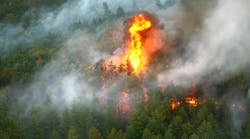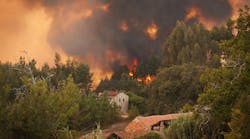On behalf of the Utility Arborist Association, I would like thank the many transmission and distribution utility members for their support. The UAA is strong and growing with more than 4,000 individuals committed to safe, efficient and environmentally responsible management of about 14 million acres of utility rights-of-way (ROW) and the approximately 500 million trees growing around primary distribution lines in North America alone. Doing it right is a big job. It requires a commitment at all levels, from the field worker to the executive office staff of the utilities, vendors, suppliers and everyone else interested in the safe and reliable distribution of energy. The Transmission & Distribution World vegetation supplement is an important part of the effort to continuously improve utility vegetation management (UVM) everywhere. We thank T&D World for their support.
The UAA has been expanding its role in improving the UVM industry and engaging with federal land agencies to improve access for vegetation maintenance work. Our representatives are participating on ANSI A300 and Z133 committees and helping the International Society of Arboriculture as it crafts industry best practices. We also have a group working to develop a Tree Risk Assessment for Electric Utilities Best Management Practices. The list of UAA initiatives goes on, but there are three areas that are receiving significant attention from our membership: safety, education and research.
The UAA has committed to moving safety from a priority to a core value. Priorities can change but core values do not. Our safety summits are bringing together workers, managers and executives for open discussions on how to ensure all workers go home safely. It is gratifying to hear utility personnel leave these meetings and say it was a life-changing experience. So far in 2016, Duke Energy and First Energy have hosted a safety summit, and soon you will be hearing about another safety-oriented initiative of the UAA. Our utility and vendor representatives are working together to build the Silver Shield Award to recognize safety champions and to continue to raise awareness industry-wide. If you want to host a safety summit or have ideas on how the UAA can help keep our industry safe, please reach out.
Education has always been a priority at the UAA, but it is now receiving even greater attention. As the UAA looks forward, we are working to provide more and more diverse educational and networking opportunities than ever before and to provide those opportunities to workers, managers, other stakeholders and the public. This is a rapidly changing industry. Utilities whose vegetation management programs are not constantly changing and whose vegetation managers are not learning through education and networking are likely falling behind.
Third, the UAA will continue to drive innovation through research. We are soliciting proposals for research that will help us understand how seemingly healthy trees are so often the cause of downed lines. Evidence indicates 50% or more of all tree-related interruptions are caused by trees with no apparent evidence of increased risk. How can we mitigate this problem? Are there indicators we are missing? How can utilities maximize their tree risk assessment programs?
We are also developing a research initiative to look into the costs and impacts of integrated vegetation management (IVM) in the West. PG&E provided a $250,000 grant for an initiative that will bring Western utilities together with academics, state and federal agencies, environmental non-profits and local utilities to design a project that will document and demonstrate how vegetation management practices affect the environment as well as the utility’s budget.
Finally, a further thought about IVM. The ROW Stewardship Accreditation Program was founded to recognize excellence in UVM, and it sets a very high bar. It recognizes utilities that practice sustainable IVM with excellence. These are utilities that approach IVM from the standpoint of what can be created rather than what must be killed. They are engaging stakeholders; creating habitat; protecting rare, threatened and endangered flora and fauna; managing the spread of non-native invasive species and more, while ensuring the safety and reliability of their system. They are likely reducing their costs at the same time. These ROW stewards are demonstrating that utilities concerned with sustainability should be looking to their vegetation management programs. The UAA joins the members and sponsors of the ROW Steward Accreditation Council in congratulating these ROW stewards and thanking them for their leadership in sustainable IVM.
Again, the UAA is grateful for the opportunity to correspond with the many utility professionals in the industry and we look forward to a continued partnership.

